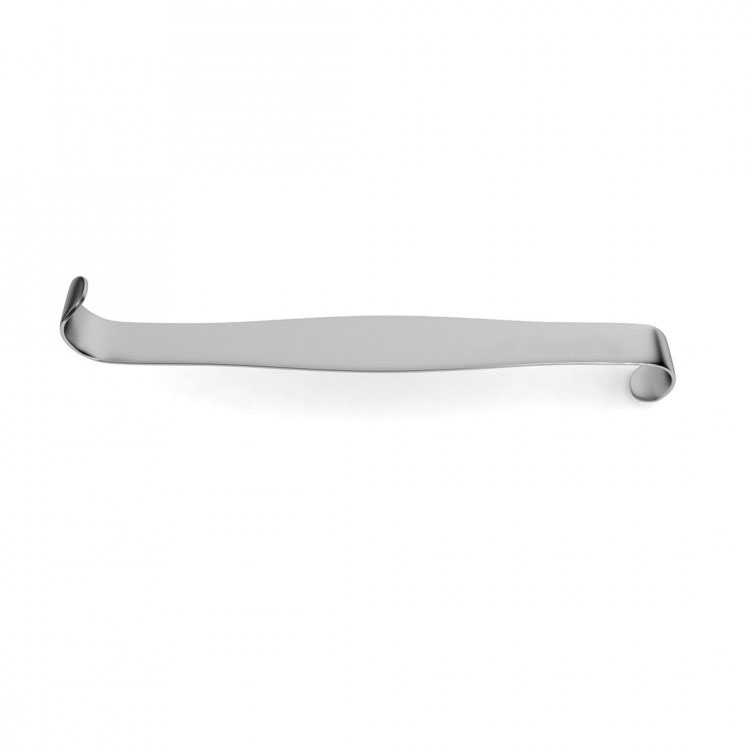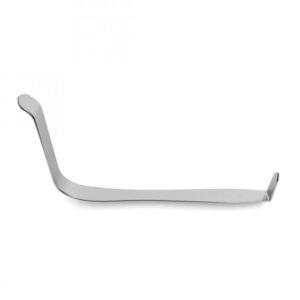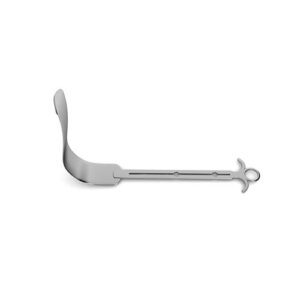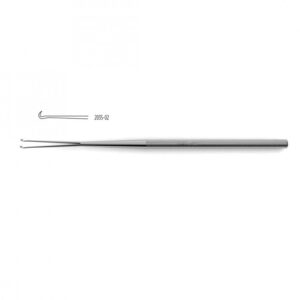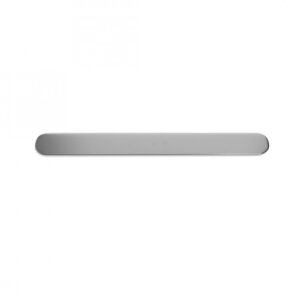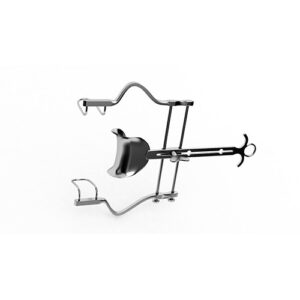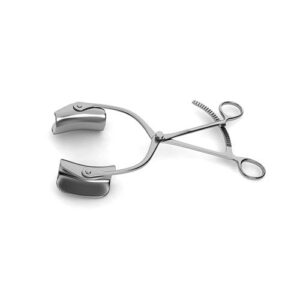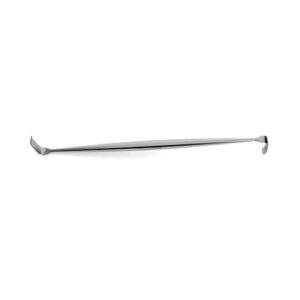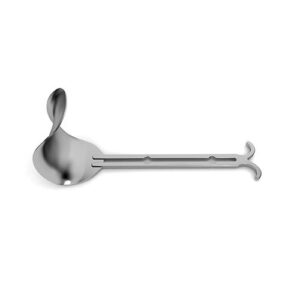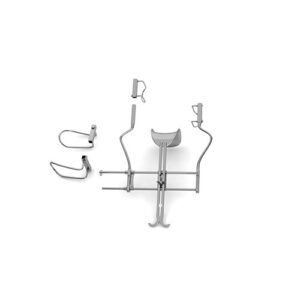| Name | Hasson-Style Retractors |
| Lead Time | Lead time advised within 48 hours of order placement. |
| Specialty | General Instruments-Hooks & Retractors – Retractors |
| Material Finish | Stainless Steel |
| Grade | Premium Operating Room |
| Units of Measurement | Each |
| Manufacturer | seemab surgical |
| Sterility | Non-Sterile |
| Usage | Reusable |
Hasson-Style Retractors
Hasson-Style Retractors
s-shaped, 6-3/4″ (17.0 cm), pair
Hasson-Style Retractors are available in pairs that can come in sizes ranging from small to large and each contain different widths. The s-shape curve is a feature of this instrument because the blades are opposing each other. Additionally, the 6 ?” long retractor may be useful during laparoscopic surgery to keep incisions open.
SKU:
VI-01-531
Category: Hooks & Retractors
Description
Shipping & Delivery
Related products
Barsky Skin Hook
Knurled handle, 6" (15.2 cm), sharp
Barsky Skin Hook can be used in various medical procedures where skin or soft tissue needs to be maneuvered, such as procedures involving plastic surgery or ophthalmology. The knurled handle contributes to a better grip for the surgeon, and the hook at the end contains a sharp prong that can be single or double. The high quality stainless steel used to produce this instrument may help to prevent bacteria from adhering to its surface during an operation.
Balfour Narrow Center Blade
Balfour Narrow Center Blade
for detachable balfour retractor systems
Balfour Narrow Center Blade consists of a flat blade on one end that is curved at a right angle. This blade also contains small lips on the edges to keep a large incision open. The handle of this instrument is fenestrated and has small loops that rods from lateral blades can fit onto in order to create the desired spread size.
Davis Brain Spatula
Davis Brain Spatula
malleable, 7" (17.5 cm)
Davis Brain Spatula is 7" in length and comes in a variety of widths to accommodate different cases. This instrument is commonly used in neurology procedures to hold the opening in the brain while operating. The spatula is also malleable, which allows it to bend and fit the size or depth of the operated brain. Following the conclusion of the surgery, a small hammer is used to strike the spatula in order to restore it to its initial shape.
Balfour Abdominal Retractor W/ Fixed Side Blades
w/ ratchet bar mechanism, w/ fixed fenestrated side blades, 7-1/8" (18.1 cm) maximum spread
Balfour Abdominal Retractor with Fixed Side Blades contains a ratchet bar mechanism and side blades that are fenestrated. These side blades are designed to push apart an incision while the ratchet holds the instrument in position. The solid center blade, however, can be lowered or raised to provide better visibility for the surgeon.
Collin Abdominal Retractor
Set includes: frame (110.0 mm spread, 9-1/4" (23.5 cm)) & pair of blades (62.0 x 38.0 mm)
Collin Abdominal Retractor is an entire set that includes a frame and a pair of blades. These blades are outwardly curved at a right angle and are deep enough to retract thicker areas of the abdomen. In addition, the retractor contains ring handles and a spreader that has a maximum spread of 110.0 mm, which can keep larger incisions open.
Davis Retractor
Double-ended, 5.0 mm x 16.0 mm & 8.0 mm x 21.0 mm blades, 5-1/2" (14.0 cm)
Davis Retractor is a stainless steel instrument that is double-ended and has opposing blades on either end. This retractor is able to divide and keep edges of an incision open. This instrument is also protected by the seemab surgical manufacturer warranty on defects in materials and workmanship.
Balfour Standard Center Blade – For Fixed System
For balfour retractor systems w/ fixed side blades
Balfour Supra-Pubic Center Blade is available in different sizes to accommodate different surgical procedures and patients. The blade is curved and has lips around the edges to assist in operations such as a Suprapubic Cystostomy. This center blade may also be detached when used with the Balfour Retractor Systems.
Abdominal Detachable Retractor
Abdominal Detachable Retractor
set includes: 1 pair of 2-1/2" (6.4 cm) wire lateral snap-on blades, 1 pair of 3-1/2" (8.8 cm) wire lateral snap-on blades & one (1) center blade
Balfour Abdominal Detachable Retractor is a system that includes one pair of 2 ?" wire lateral snap-on blades, one pair of 3 ?" wire lateral snap-on blades, and one center blade. The center blade is offered in a varity of sizes to accommodate patients. Its ideal function is to be used during a laparotomy in which abdominal incisions need to remain open to uncover the area. Additionally, this retractor is self-retaining, which allows it to be held in place to allow the surgeon to focus on the task and avoid holding it.

